On the southeast coast of Mexico’s Baja Peninsula, surrounded by rugged desert and pristine beaches, the state capital, La Paz, overlooks a protected bay off the Sea of Cortez. Unlike Cabo San Lucas, the splashier resort 100 miles to the south, this old colonial settlement, founded by the Spanish in 1535, retains much of its historic character. Even with 250,000 inhabitants, it still looks like the small port town where John Steinbeck set his 1947 novella The Pearl. Along the water, a recently rebuilt promenade gives it a distinctly urban edge. This is where Grupo Habita, the design-savvy hotelier, discovered a landmark villa built around 1910 for a prominent family whose enterprises included harvesting pearls from oysters. “It was almost as if the house was waiting there for us,” recalls founder and managing partner Carlos Couturier, “to tell a new story.”
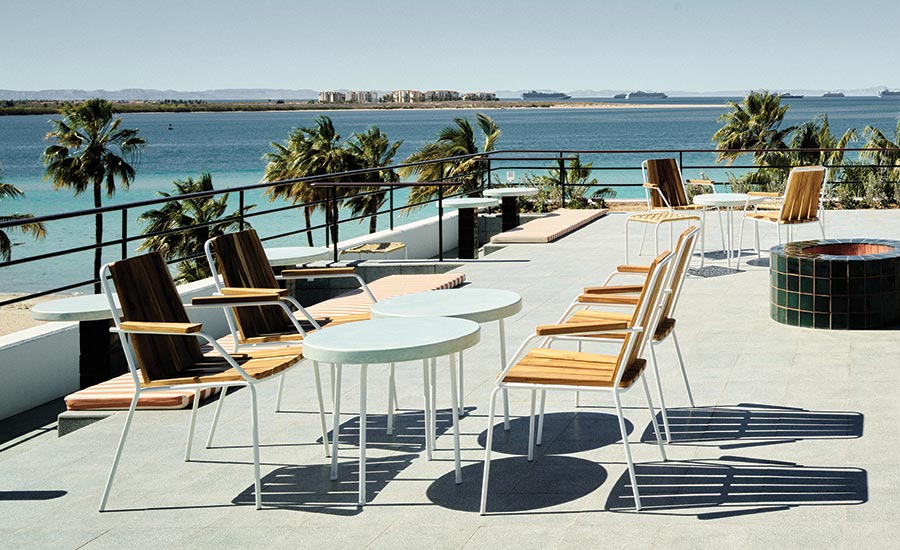
A roof terrace overlooks the Bay of La Paz. Photo © Fernando Marroquín, click to enlarge.
To help write this story, Couturier turned to Max von Werz Architects, of Mexico City, and JAUNE, interior designers based in Paris. “My brief to Max,” he explains, “was to respect the urbanity of La Paz; to create a minimalist building connected to the sea, like an intimate cruise ship docked on the promenade; to give a terrace to every room; and to integrate elegantly with the historic house.” He asked JAUNE to evoke sybaritic outdoor living with understated luxury. “The Sea of Cortez was the favorite sea of Jacques Cousteau,” says Couturier. “We asked them to deliver a hotel where Mr. Cousteau might have dined and slept after a long day on his boat, the Calypso.”
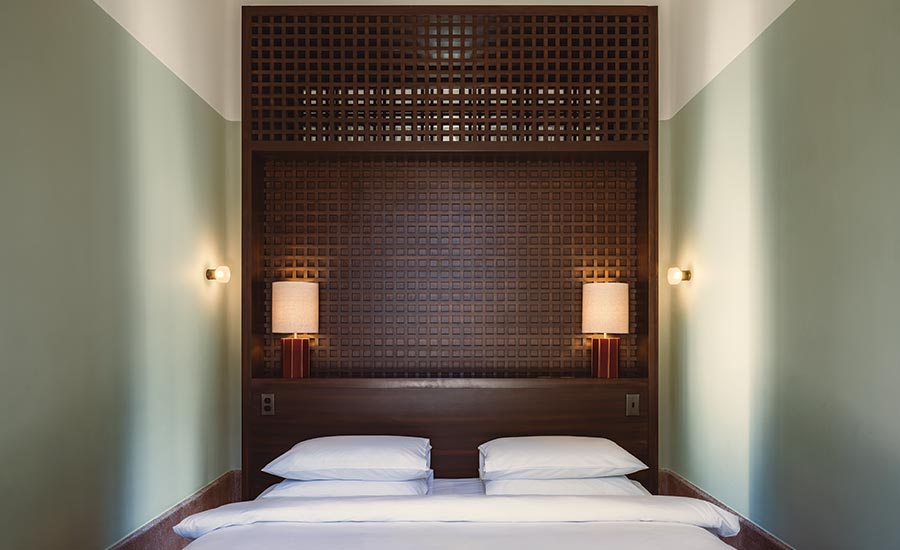
Guest rooms feature poplar millwork. Photo © César Bejar
With just 4,900 square feet, the single-story historic house could absorb only a fraction of the hotel’s program: reception, lounge, restaurant, bar, kitchen, meeting space, and five guest rooms. A 34,100-square-foot addition of four floors and a basement accommodates 27 more lodgings and a spa. “Before we commenced construction, the zoning changed to permit more height,” recalls von Werz. “We briefly studied the possibility of adding a level but abandoned the idea, as the building started to feel out of sync with the urban context and the domestic scale of the villa.”
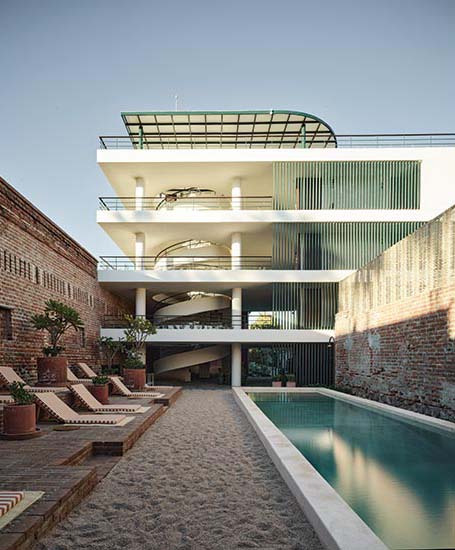
A circular stair leads to a pool within old walls. Photo © Fernando Marroquín
The site has an irregular, polygonal shape. An old redbrick wall encloses the sides and rear, formerly occupied by sheds and workshops. At the front, the historic house borders the promenade, its L shape anchoring the lot near its northwest corner. Von Werz’s scheme for the addition was simple and direct: a second L-shaped building at the southeast corner, whose oblique angle he finessed with a circular stair. “The two volumes complement each other,” says the architect. “Together they form a coherent whole, a perimeter construction that loosely frames a central courtyard.” Other outdoor spaces include a pool court and gardens along the property’s edges, and Grupo Habita’s signature rooftop bar (as seen in RECORD, December 2011, June 2013, and February 2017).
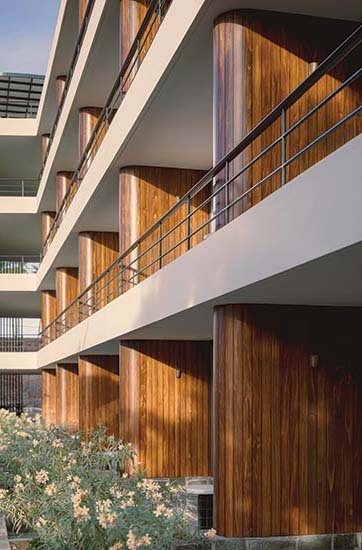
Wood-clad walls support stucco-finished concrete slabs with parapets. Photo © César Bejar
The addition rises as a stack of four boomerang-shaped tiers made of reinforced concrete. At the ends, the tiers cantilever and step back to reduce mass and provide generous terraces. “They evoke nautical images of a cruise ship’s deck,” says von Werz, recalling his client’s request. The spaces between slabs are punctuated at 18-foot intervals by walls clad in acetylated wood that frame large planes of glass, enclosing guest rooms set back behind private balconies. The contrast between this bold modernist composition and the classically articulated villa is striking. But the two buildings coexist harmoniously because both are finished in white-painted stucco and share a horizontal rhythm. One floor of the new building aligns approximately with the cornice of the old, establishing a subtle continuity along the street.
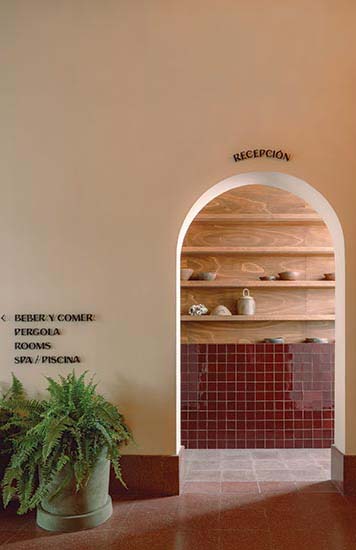
Artisanal tiles were used on the walls and floors. Photo © César Bejar
Materials throughout draw on the original detailing of the house, including artisanal terrazzo and Talavera tiles, hand-finished wood lattice and millwork, and blown-glass lamps in both clear and amber tones. “The atmosphere of the existing building was so strong that it became the common thread for the whole project,” says Paula Alvarez de Toledo of JAUNE. Almost everything except bathroom fixtures and fittings—and door handles designed by von Werz’s former employer David Chipperfield—was fabricated in Mexico, much of it nearby. “Grupo Habita steers away from importing products and consistently wagers on the local,” says von Werz.
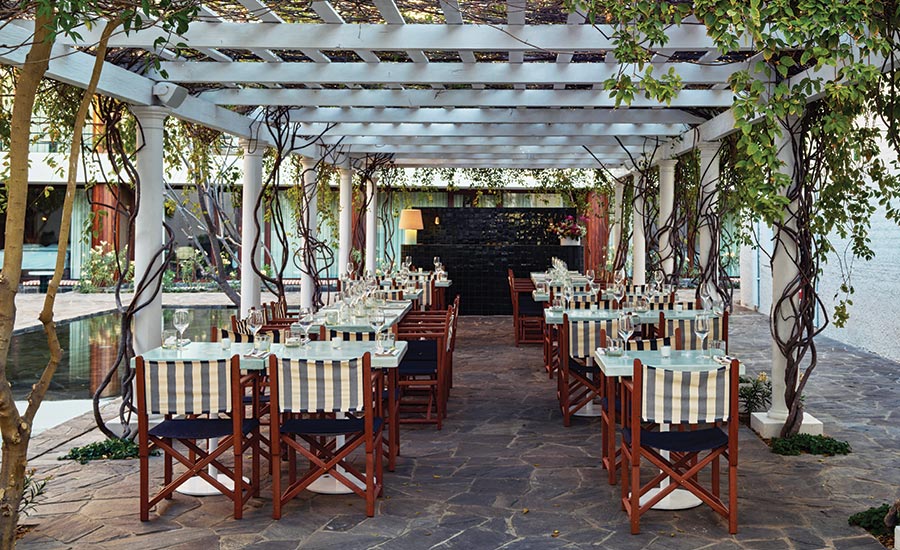
A restored pergola shades an alfresco dining area in the courtyard. Photo © Fernando Marroquín
The architect minimized the need for air-conditioning despite the hot, dry climate. The concrete floor plates reduce solar heat gain by providing substantial shade on balconies and outdoor corridors, where permeable screens of lacquered steel fins facilitate cross ventilation. Water features provide evaporative cooling in outdoor spaces.
“La Paz has mainly two types of visitors,” says Couturier. “High-end travelers arriving in private jets and heading straight to their yachts, or independent travelers who love nature, hiking, pristine beaches, or kitesurfing. We see our hotel as a social hub where these two groups connect.” With its sophisticated layering of new and old in a setting that juxtaposes natural splendor with urban vitality, Baja Club seems certain to attract both sets of clientele. Too bad Jacques Cousteau can’t join them.
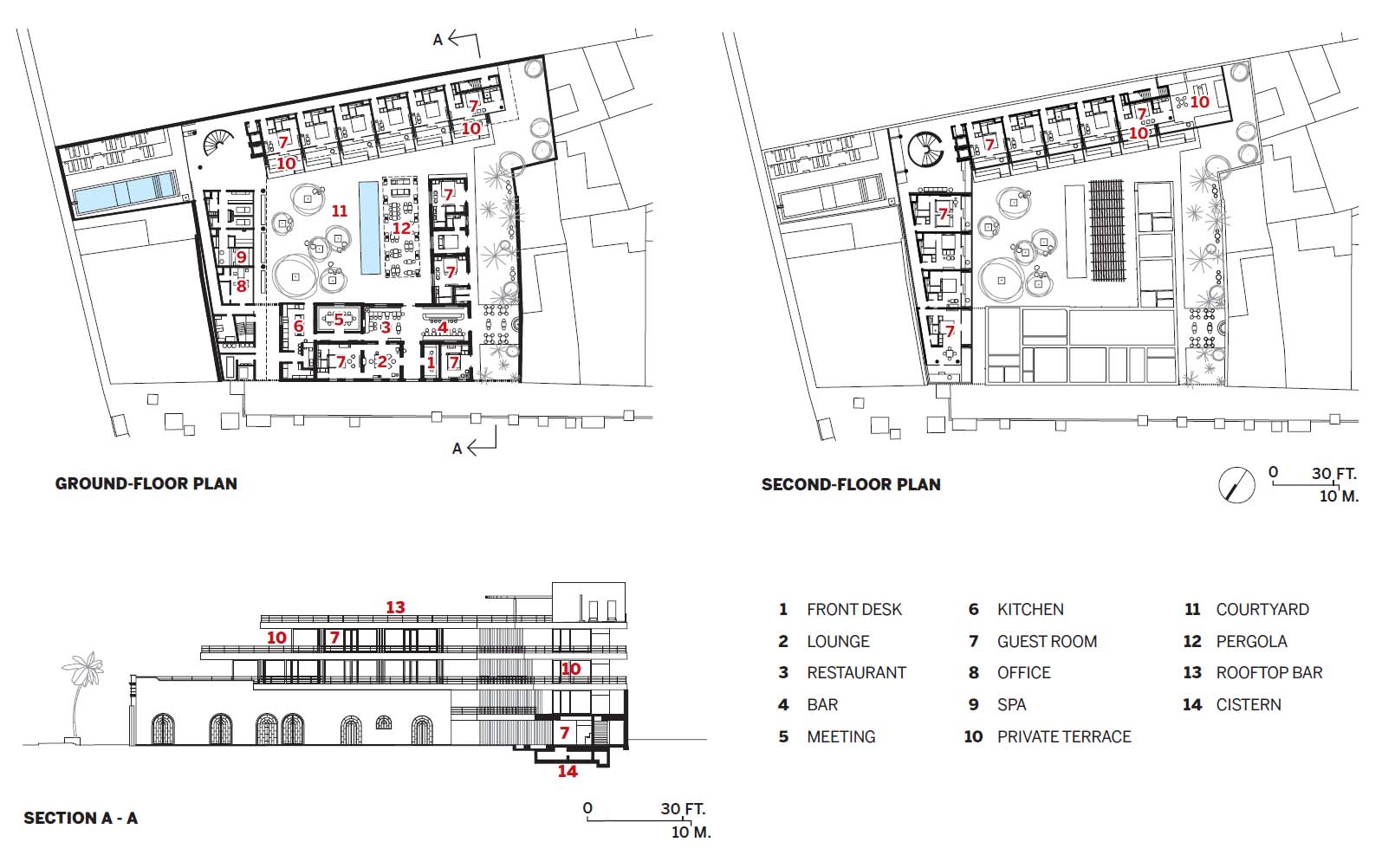
Click drawing to enlarge
Credits
Architect:
Max von Werz Architects — Max von Werz, design lead; Miguel Coloma, project architect; Ivan Alonso Lopez, Josué Palma, José Luis González, Andrea Guillén, Rafael Barbato, Jimena Castañeda, Laura Stoll, Víctor Martínez, Arturo Chávez, team
Interior Designer:
JAUNE
Engineers:
Ricardo Camacho, DECSA (structural); Taller2M (m/e/p); SAAD (acoustical)
General Contractor:
GRAVI
Consultants:
Luca Salas (lighting); PAAR (landscape); Policestudio (branding); Luis Olachea (construction supervision)
Client:
Grupo Habita
Size:
39,000 square feet
Cost:
Withheld
Completion Date:
March 2021
Sources
Exterior Wood Cladding:
Inntec/Accoya
Glass:
Cristacurva/SentryGlas
Wood Doors:
Dulce Huerta/Grupo DH
Talavera Wall Tiles:
San Pedro Tile
TerrazZo Floor Tiles:
Gabriel Fausto Alvarez



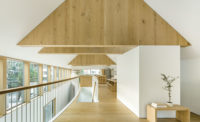
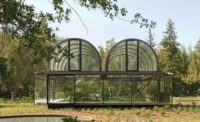

Post a comment to this article
Report Abusive Comment